The ASUS ROG Phone II Review: Mobile Gaming First, Phone Second
by Dr. Ian Cutress on September 30, 2019 11:00 AM EST- Posted in
- Mobile
- Asus
- Qualcomm
- Smartphones
- ROG
- RGB
- Snapdragon 855 Plus
- ROG Phone II
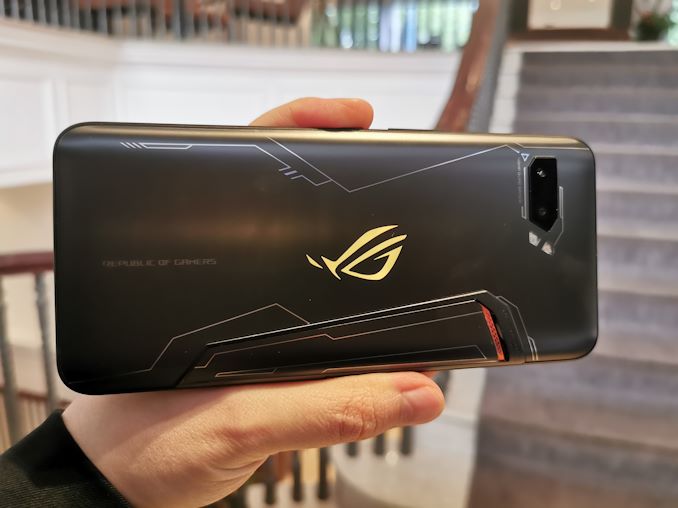
The concept of mobile gaming is still a relatively new phenomenon. The idea that a user can have a smartphone dedicated to gaming that isn’t in of itself a console or handheld platform from Nintendo seems very odd – here’s a device that does everything a phone can do, as well as play the same games, so what makes it a “Gaming Phone”, especially if it has almost the same hardware inside? ASUS’s new ROG Phone II, designed under its Republic of Gamers brand, is ultimately a product designed to showcase that there are things you can do with a phone to make it more gaming focused. We take the device (and some of its accessories) for a spin.
| ASUS ROG Phone II | ||||
| ROG Phone II | ||||
| SoC | Qualcomm Snapdragon 855+ 1x Kryo 485 (Cortex-A76) @ 2.96GHz 3x Kryo 485 (Cortex-A76) @ 2.42GHz 4x Kryo 485 (Cortex-A55) @ 1.80GHz Adreno 640 @ 675MHz |
|||
| DRAM | 12GB LPDDR4X | |||
| Display | 6.59" AMOLED 2340 x 1080 (19.5:9) 120 Hz |
|||
| Size | Height | 170.99 mm | ||
| Width | 77.6 mm | |||
| Depth | 9.48 mm | |||
| Weight | 240 grams | |||
| Battery Capacity | 6000mAh | |||
| Wireless Charging | - | |||
| Rear Cameras | ||||
| Main | 48MP IMX586 0.8µm pixel w/PDAF f/1.79 |
|||
| Telephoto | - | |||
| Wide | 13MP 125° FoV / 11mm equivalent |
|||
| Extra | - | |||
| Front Camera | 24MP f/2.0 77.9° FoV |
|||
| Storage | 128 / 256GB UFS 2.1 | |||
| I/O | USB-C 3.5mm headphone jack |
|||
| Wireless (local) | 802.11ac Wave 2 Wi-Fi Bluetooth 5.0 LE + NFC |
|||
| IP Rating | none | |||
| Other Features | Dual Speakers 2 capacitive trigger buttons In-screen optical fingerprint sensor Accessory port & tons of first-party accessories (Active cooler included by default) |
|||
| Dual-SIM | 2x nanoSIM | |||
| Street Price: | 12+512GB: $899 / £829 / 899€ | |||
The ASUS ROG Phone II: The ‘It Can Also Be a Phone’ Phone
Our smartphone reviews here on AnandTech, and in the wider ecosystem, always come from the standpoint of ‘this is a phone’. This mindset implies, both consciously and sub-consciously, that the calling and texting functions on the device should be of primary importance, and should be at the foundation of the device, with everything else layered on top. The ecosystems we have on modern smartphones, particularly Android smartphones, have built around this nascent idea that we are dealing with a smartphone first and foremost, and the ability to take great pictures, slow motion video, access the internet, or create reams of social media content are all secondary in that respect. Perhaps the point should be – would you buy a device that is around six inches, could access the internet, can take great photos, has a large application ecosystem, and can be a creative bastion, but didn’t accept calls?
The point I’m trying to make here is that in a device like the ROG Phone II, the fact that a user can take calls is almost supplementary to its main purpose – to offer gaming content and provide a sizeable user experience uplift from playing these games on a standard smartphone. The fact that it can also receive phone calls is almost irrelevant to a degree, because even if that feature wasn’t present, it still ends up being a formidable entry as a unique device category unto itself.
Let’s pick out some clear mobile devices that have existed and categorize them:
- MP3 Player: A music player with limited interaction
- iPod Touch: A non-phone music player that could access Wi-Fi, run apps and take pictures
- Smartphone: A phone and music player with cellular access for apps and cameras for pictures
- Nintendo DS/Switch: A larger screen dedicated gaming device with external cartridge apps and Wi-Fi, no music/camera/calls
- Tablet: A larger screen non-phone with cellular access, apps, and cameras
A ‘gaming’ phone in this context aims somewhere between the smartphone and the Switch – the question is if we start at the console end first and move towards a smartphone, like a gaming tablet, or start with a smartphone and make it more like the switch. ASUS, as well as a couple of other companies with their hands in the gaming smartphone market, are going for the latter. The key in all of this is whether a manufacturer can move in one direction and improve on the user experience, without it being to the detriment of the traditional experience.
Another point on a ‘gaming’ phone worth mentioning is the hardware. A ‘gaming’ PC is fairly easy to differentiate – it might have more powerful hardware than a standard PC, perhaps tricked out in flashy LEDs, and optimized for specific games. The problem that a ‘gaming’ smartphone has is that the flagship smartphones already use the best SoC and the best displays available. In order for a vendor to create a ‘gaming’ smartphone in that instance, at least from a hardware perspective, is to add new features that help with user experience, even if the peak performance numbers might not actually be any different. We’re going to see that a fair bit with the ROG Phone II.
The ASUS ROG Phone II: A Look Around The Hardware
The first thing that someone notices about the device is that it’s fairly big, and a bit heavier than normal devices. With a 6.59-inch AMOLED display rocking a 2340x1080 resolution, this smartphone is noticeably bigger than average, matching most flagships on the market. It doesn’t have a notch, which also increases the size and feel. For weight, we have a sizeable 240g (8.47 oz), whereas other flagship devices such as the iPhone 11 Pro Max (226g / 7.97 oz), Huawei P30 Pro (198g / 6.98 oz), Samsung Galaxy S10+ (175g / 6.17oz), Oneplus 7T (190g / 6.70 oz), and the Sony Xperia 1 (178g / 6.28 oz) are all lighter. Other gaming smartphones come in at 220g (7.76 oz) for the Razer Phone 2, 205g (7.23 oz) for the Xiaomi Black Shark 2 Pro, and 215g (7.58 oz) for the Nubia Red Magic 3, meaning that this ASUS ROG Phone II is probably the heaviest flagship and gaming smartphone available.
One might come to the assumption that a large and heavy phone becomes unwieldy. Personally I’ve been hawking around a Huawei P30 Pro for the last six months with a case, and so the ROG Phone isn’t that might physically bigger but is an extra 20% in weight. As a male with access to pockets, that doesn’t bother me that much at all, however I can see certain circumstances where it might. It’s still a very mobile device, but you do need the clothes in order to make it that way.
Therein lies the rub, in making a ‘gaming’ phone, trying to bridge the gap between something like a phone and the Switch, but starting with a smartphone as the base. Ultimately in order to get the best out of this gaming phone, it has to be treated like a portable console rather than a phone. This matters a lot more when we start looking at the accessories.
But as for the phone, the AMOLED display is a true 120 Hz display with a 1ms response time, but also supports 240 Hz touch response, with ASUS quoting a 49ms touch latency, which it says is industry leading. The display uses Corning Gorilla Glass 6, is a true 10-bit HDR display, and is rated at 111.8% DCI-P3 with a delta E color accuracy < 1, which is a high industry standard. (It should be noted that while the display might be 10-bit, Android still does not have support for 10-bit content.) ASUS lists the panel at 600 nits brightness (we achieved ~450 nits with 100% APL), and a 500,000:1 contrast ratio.
The ROG Phone II is one of only a few devices with a 120 Hz display, with a number of high-end devices looking above the traditional 60 Hz displays to increase user experience. ASUS supplied us with a list of almost 100 gaming titles that support >60 Hz, with most supporting 120 Hz. By default, ASUS runs the phone in 60 Hz mode, for battery reasons obviously, and users will have to manually enable 120 Hz mode on titles that support it. Some titles will also need the option selected in their own options menu. By doing it this way, ASUS can ensure a high battery life in regular modes, and they expect ROG Phone II users to be savvy enough to enable this option when they need it through the gaming modes.
The top of the phone hoses the front facing camera, which is a 24MP unit with 0.9 micron pixels, pixel binning (offering a 6MP shooting mode), and an f/2.0 aperture.
One noticeable different with the ROG Phone II compared to other flagships is the speaker location. On most devices, we either get a single mono speaker on the bottom of the device, or some stereo speakers with one at either end, pointing out. Some brands have pushed quad-DAC solutions as well. For the ROG Phone II, ASUS has used dual speakers, but they are front facing, with both being directed at the user. These speakers are powered by a dual NXP9874 amplifier, and ASUS state that the chambers are tuned for volume and low distortion. Other gaming smartphones on the market also go with dual front facing speakers, and this is one reason we don’t get those limited notches on gaming devices.
The rear of the smartphone is also a key difference to other devices. Unlike the array of glass or metallic symmetric designs on modern flagships, ASUS has decided to make it gaming focused. In the middle is the ROG logo, which in normal mode looks very standard. In the special ‘X’ mode from software, this lights up with RGB LEDs. Depending on the mode, users can customize the LED pattern as they need to, in an element of personalization. I know some smartphone users at this point will highlight either (a) thermals, (b) battery life, or (c) what’s the point, but on all three fronts I would argue that if you ask any of those things, then this isn’t a phone for you. The phone is packed with different methods to dissipate thermals (more on that later), the battery is massive and these are low powered LEDs, and the point is because it’s a way to show off. They can be turned off, so if you’re in the market for a gaming smartphone and some flashing LEDs are a make-or-break feature for you, then there is good news that they can be disabled.
Also on the rear is a vent, which is connected internally to the heatsink in connection with the main SoC. In order to provide extra cooling to the smartphone, ASUS has used copper and graphite pads at several stages of the design of the smartphone, most of it focused in the vertical of the SoC as the diagram below shows. Above the SoC/CPU is a cooling putty/paste and a heatsink, while underneath the SoC is a 3D vapor chamber. I can confirm that even with this all in place, when the phone is in its maximum thermal mode, this is the area that heats up quite a lot.
Also on the rear are the two rear cameras. Normally when we discuss a smartphone, the cameras are going to be one of the highlights. For this sort of device, we expect ASUS to at least hit a good average, even though we’re not expecting the best from the hardware and the software such as an iPhone, Pixel, Galaxy, or P30. ASUS has actually pushed the hardware here, using a 48MP Sony IMX586 high-end sensor, with 0.8 micron pixels and quad-binning for a 12MP / 1.6 micron image. The sensor is a 1/2.0-inch design, with an f/1.79 aperture. The second camera is a 13MP ultra-wide 125-degree camera, with an f/2.4 aperture and ‘real-time distortion correction’ with wide-angle video. It’s worth noting that we’ve seen before good hardware is easy to just purchase, but good software take time to develop, so it will be interesting to see what ASUS has done here. The rear cameras support 4K60 video, 3-axis EIS, and 720p at 480 fps slow-motion video.
Elsewhere physically on the device is a USB Type-C port on the bottom, along with a 3.5mm jack. The whole audio system has 192 kHz/24-bit support with DTS:X Ultra virtual surround sound. On the side is something that looks like dual USB-C ports, but is actually something different.
This little side port is used for the wide array of accessories that this smartphone supports. Technically the top one is a USB port, so can be used, but the other is for power and other functions. The idea here is that users can, at the very least, use the bundled fan attachment that comes with the smartphone (the ‘AeroActive Cooler II’) that does two things: adds a fan to help cool the device for better gaming, but also provide a handling mode such that when in landscape, the power and headphone jack are coming out of the middle of the smartphone, rather than the side that might hamper the experience.
It also has an ROG logo on the back and front that both come on with LEDs when the special gaming X mode is enabled. The fan is on all the time, but can be enabled to higher speeds in the options. The overall effect of the fan, when in a thermally unconstrained scenario, is to cool the device's internals by 2-3 degrees. The add on does add a lot of bulk to the device, such that you won’t be using the add-on 100% of the time, which is somewhat annoying given that the side port on the phone has a small rubber protection seal on it that you have to remove – if the fan is installed all the time, that rubber seal will be lost almost instantaneously.
Ultimately this bundled fan accessory is best used to move those cables out the way on long gaming sessions. Best to keep it in your carry case when on long trips. (Yes, this phone is starting to sound like a handheld gaming console, right?) There are also other accessories that can use this double side port, such as the Mobile Desktop Dock, and the Dual View Display.
Also around the edges of the device are two sets of ‘air triggers’.
The first set is found at the bottom of the phone when held normally, almost like the squeeze triggers on the latest HTC phones. Users can set what a short or long squeeze does, but by default the long squeeze will trigger the high performance gaming mode.
The second set of air triggers are on the top left and top right edges of the device when held horizontally. These are effectively L1 and R1 buttons similar to a normal console controller. Within each game, these can be assigned as effective ‘clicks’ on different areas of the screen. For the myriad of games that rely on left/right elements of the screen for specific functions, this is a great feature. I found the air triggers very easy to use, very easy to activate, with next to zero perceivable lag. They also have vibrational feedback control, helping with haptics.
It should be noted that ASUS has implemented a couple of features, such as doubling the standard number of radio antennas. ASUS says this is so that whatever orientation the phone is held in, the phone will get good reception, both on mobile networks and Wi-Fi. To that end, the ROG Phone II supports Wi-Fi 5 at 2.4 GHz and 5 GHz, but also 60 GHz Wi-Fi (802.11ad), enabling connections with Wi-Gig base stations and the Wi-Gig Display Dock accessory that ASUS also sells.
It’s at this point of the review where I haven’t even mentioned the SoC yet. ASUS has equipped our ROG Phone II with the Qualcomm Snapdragon 855+, the higher speed bin of the popular S855 that has powered most Android flagships in 2019. This means that the cores are slightly faster than the normal S855, supposedly for the same power, and this chip is still relatively new, so only a few devices have it so far (Black Shark 2 Pro, Xiaomi Mi 9 Pro, Meizu 16s Pro, Nubia Red Magic 3s, OnePlus 7T). We’ve tested a lot of standard S855 devices up to this point, so this is our first S855+ unit. It should be noted that the benchmark data from the ROG Phone II might be slightly off compared to our base assumptions, just because as a gaming phone ASUS has done some optimizations in the software that might not be in line with what traditional flagships would do. There’s also the gaming ‘X Mode’ which might offer some more thermal headroom or different performance scaling, which can also give different results. We’ve tested both on a few key benchmarks.
Memory and storage for this device is very high for the market, at 12 GB of LPDDR4X and 512 GB of UFS 3.0 (special China-only models might have 1 TB). Normally for that amount users would need to shell out $1400 or more, whereas it comes in this device from ASUS at $899.
It’s also worth pointing out that the battery here is a massive 6000 mAh, which is notably higher than most smartphone flagships that are typically in the 3500-4500 mAh range. This contributes a lot to the increased weight of the device compared to the other flagships, but we’ll see in the test data that ASUS gets a good advantage with this battery. ASUS also supports Quick Charge 4.0, up to 30W, and states that they charge 4000 mAh faster than most flagships, just by virtue of the large battery not needing to trickle charge the last 10% until they’re already at 5000 mAh. It’s a bit of an odd boast, and technically correct.
ASUS also has an in-built fingerprint sensor, and the front camera supports face unlock. The device is dual-Nano SIM, and does not support additional microSD cards, but does have NTFS support for external HDDs hooked up through Type-C. This comes into play with the Mobile Display Dock, one of the accessories available.




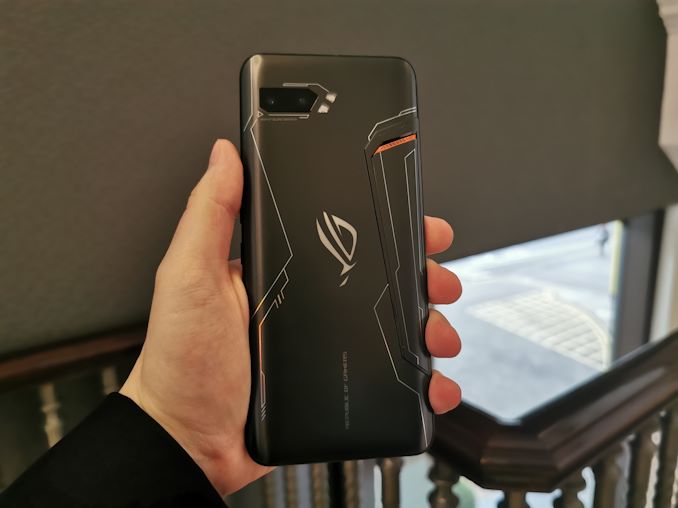
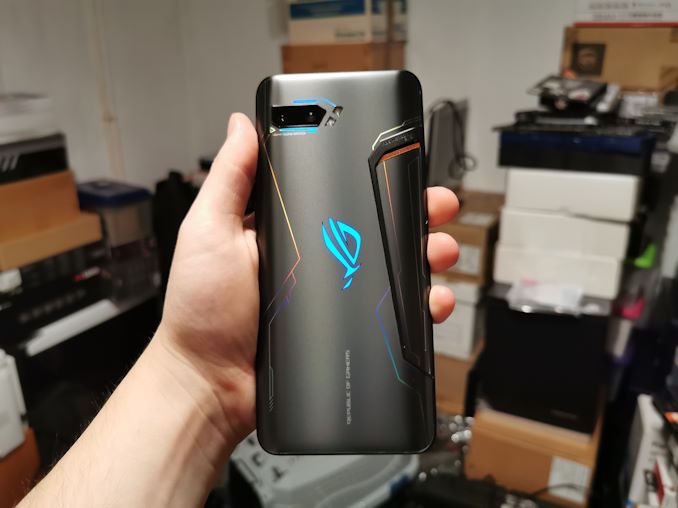
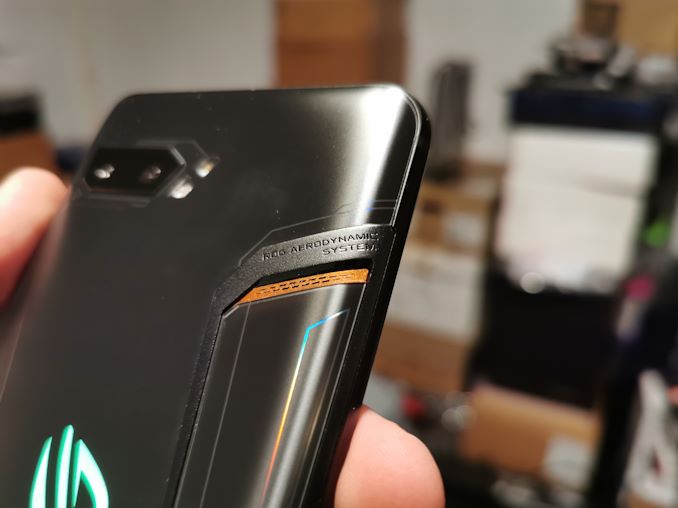
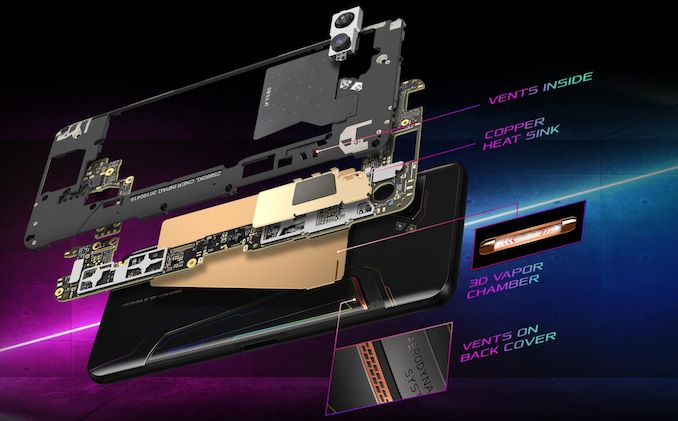
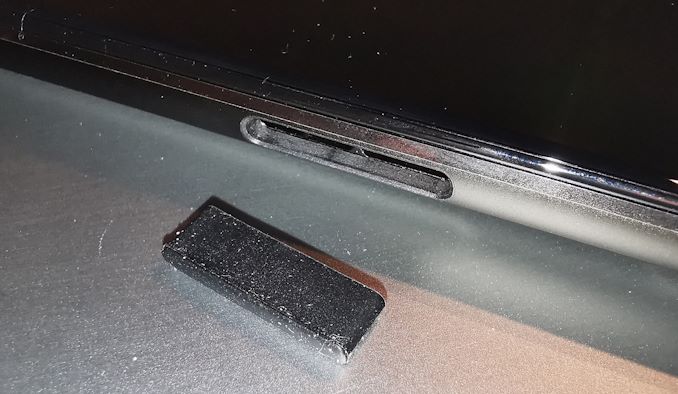
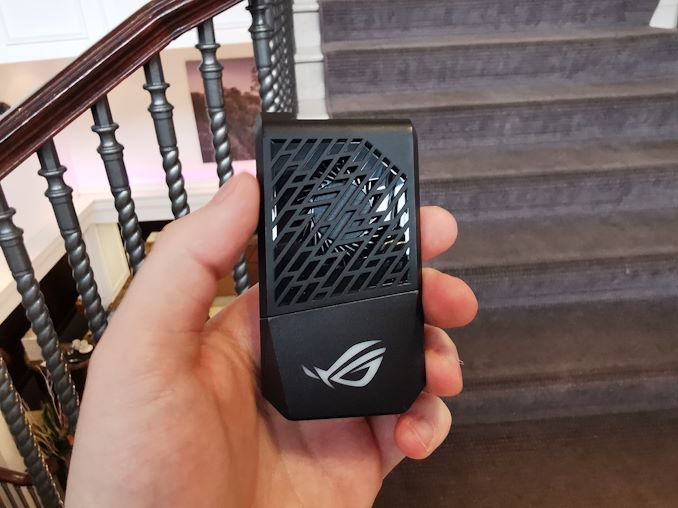

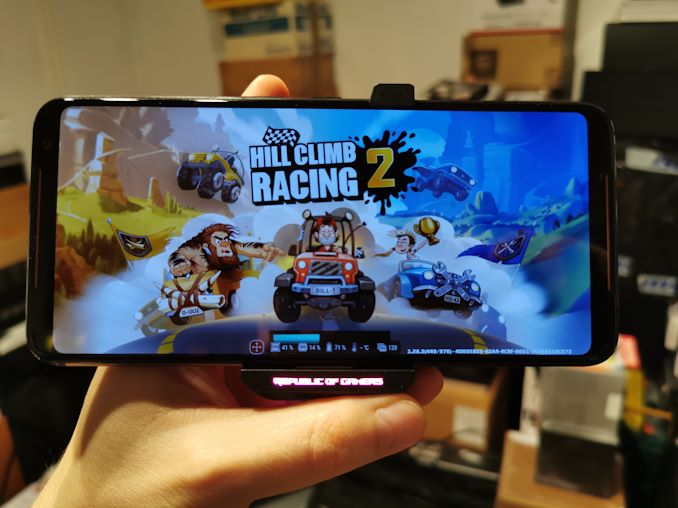
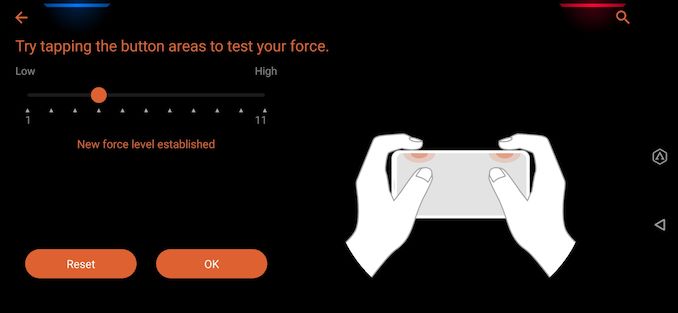
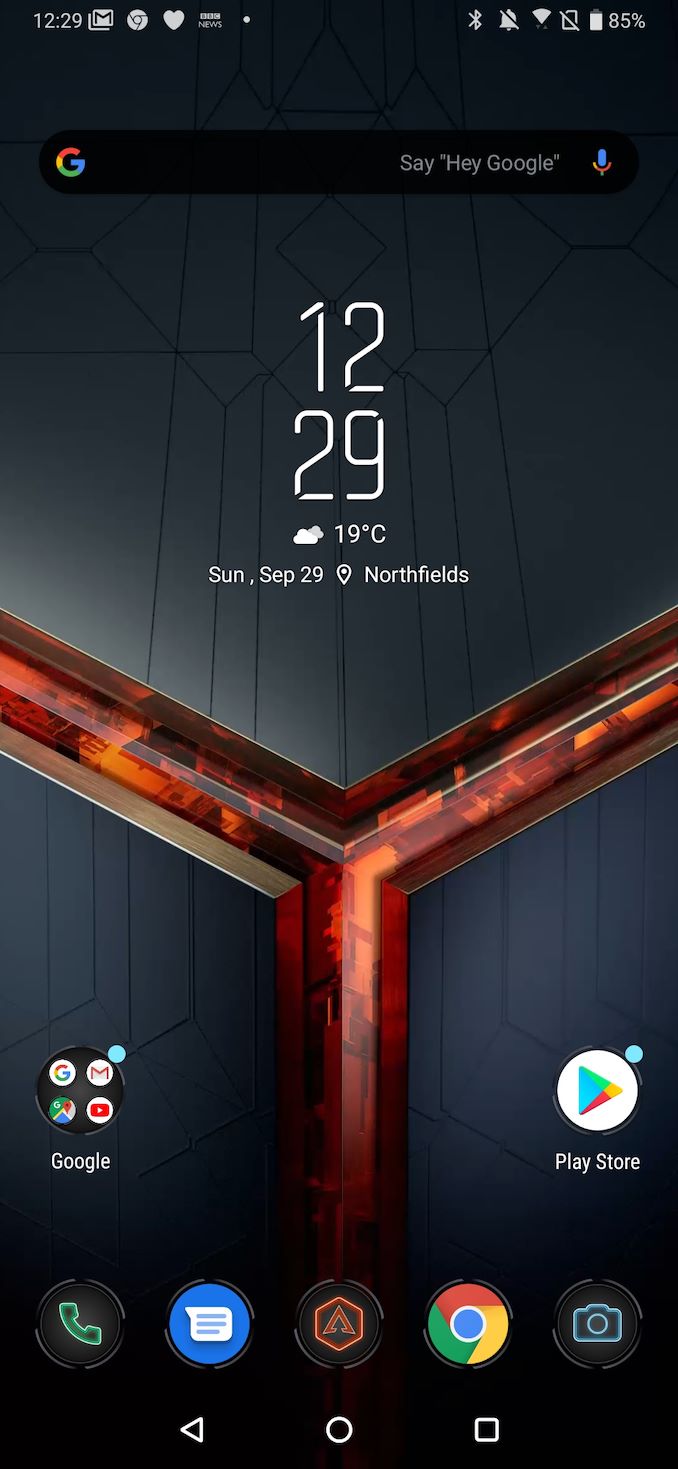
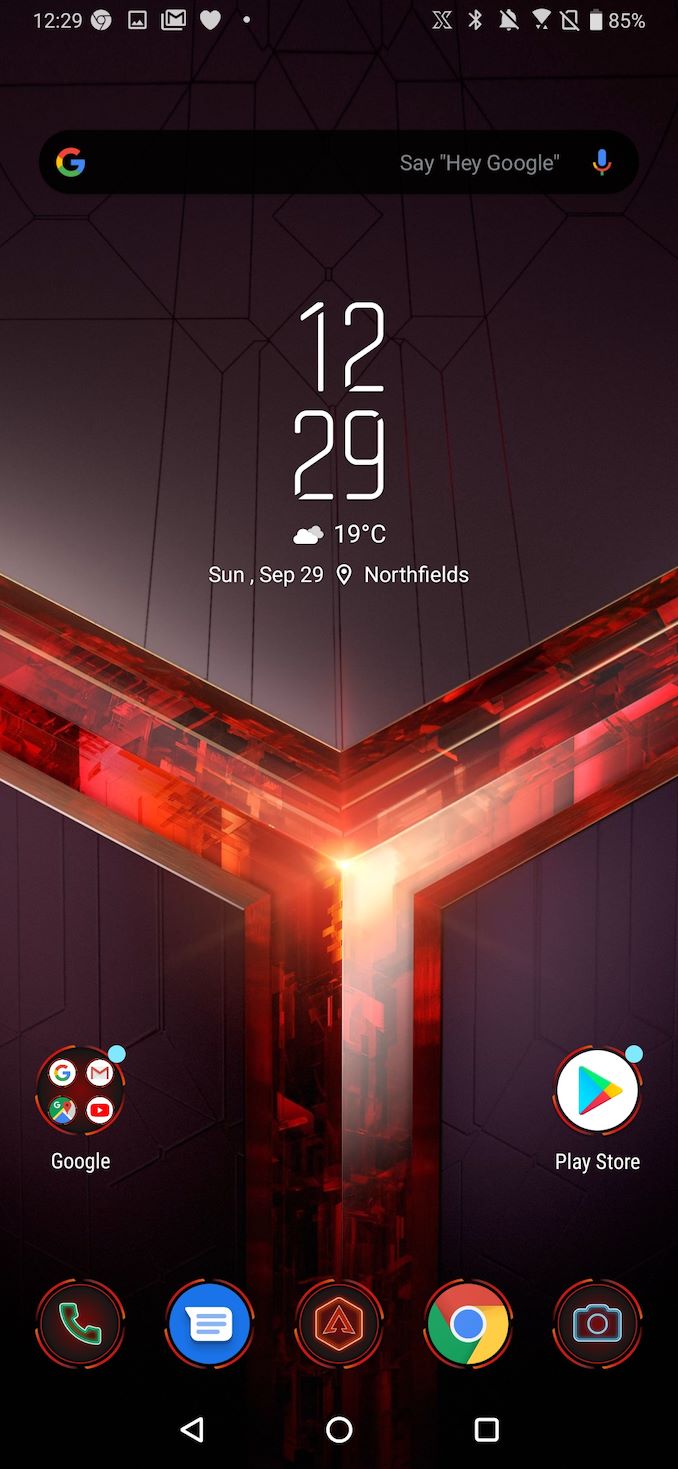








75 Comments
View All Comments
mrochester - Tuesday, October 1, 2019 - link
*buy.PeachNCream - Tuesday, October 1, 2019 - link
Anything Google touches basically turns into a platform for data collection that exploits the user and yest the phone is ugly. What sorts of alternatives did you have in mind?AdhesiveTeflon - Wednesday, October 2, 2019 - link
You want us to get a Blackberry instead?Azurael - Tuesday, October 1, 2019 - link
A phone with a large battery, no notch and a screen which isn't wrapped around the edges of the phone. Perfect but for the fact it looks like it was designed for a 12 year old (with rich parents?) and the camera suckss.yu - Tuesday, October 1, 2019 - link
1. 3rd party cases look serious enough. Also consider removing the back panel and the whole paint job inside like how some people made Samsungs transparent.2. Port Gcam.
abufrejoval - Tuesday, October 1, 2019 - link
These devices are simply the new [very] personal computers. The fact, that they evolved from phones is about as meaningful as to say that humans are a special type of single-cell organism, that stopped separating completely after cell division.And when you look at the typical daily usage pattern of these VPCs, you'll find that many, especially younger users, will go days without using the phone functionality at all: That's Mom & Pop stuff, ancient history and typically only used to remind them of chores left undone and thus silenced!
The phone moniker only serves to justify why these devices you're supposedly buying to own, are kept tethered to vendors and telcos, who have no business whatsoever on your very personal computers, after they habe become your property and digital brain extension or Internet of Bodies limb.
Please help ending this abuse if only by calling them by what they are instead of whence they originated eons ago.
PeachNCream - Tuesday, October 1, 2019 - link
It's not just a kid thing. I could easily get by without any sort of more conventional PC by relying exclusively on my phone. In a roundabout way, I've already done that by neglecting to boot up a PC for several days and more often than not, I'm only turning them on to fetch updates or do something that benefits from a keyboard (less often now since I have a bluetooth keyboard paired up with my phone). The reverse situation where I would have to resort to only a PC and omit the phone would be more troublesome because of a lack of effective communications mechanisms and a lack of portability.abufrejoval - Wednesday, October 2, 2019 - link
Absolutely, and with this dock, I am seriosly considering to buy this as a mobile workstation: I do have some usable notebooks, quite a bit slower than this device (e.g. ChuWi 12.3).Of course, there is yet some other elements missing: The clamshell dock, which allows me to use this device as a notebook and the ability to run Linux desktop apps with the proper GPU acceleration: The current hacks running a Linux userland in a chroot() and an X-Server on the Android end eat too much 'snappyness' to.
I'd keep a dock in every major office location I work in, with either a nice 4k screen or dual monitor setup, keyboard and mouse and then use the clamshell on planes and trains if the ride is long enough to make it worthwhile and otherwise just use it handheld or with WiDi for presentations. A serious conference room could have a WGig dock.
It's not a hardware issue any longer, just "opposing software empires".
29a - Tuesday, October 1, 2019 - link
Is there anyway to get uBlock to block these advertisement articles?zeeBomb - Tuesday, October 1, 2019 - link
Is this the first real superphone???